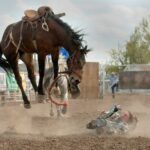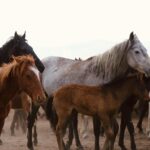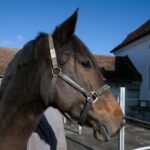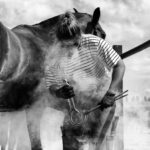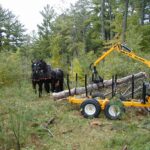Equine gastric ulcers represent one of the most common yet frequently overlooked health issues affecting horses across disciplines and lifestyles. These painful erosions in the stomach lining can dramatically impact a horse’s comfort, performance, and overall well-being, often developing silently until symptoms become severe. With studies suggesting that up to 90% of performance horses and 60% of leisure horses may suffer from gastric ulcers at some point, understanding this condition is essential for responsible horse ownership. This comprehensive guide will walk you through recognizing early warning signs, confirming a diagnosis, and implementing effective management strategies to protect your equine companion from the discomfort and complications of gastric ulceration.
Understanding Equine Gastric Ulcer Syndrome (EGUS)
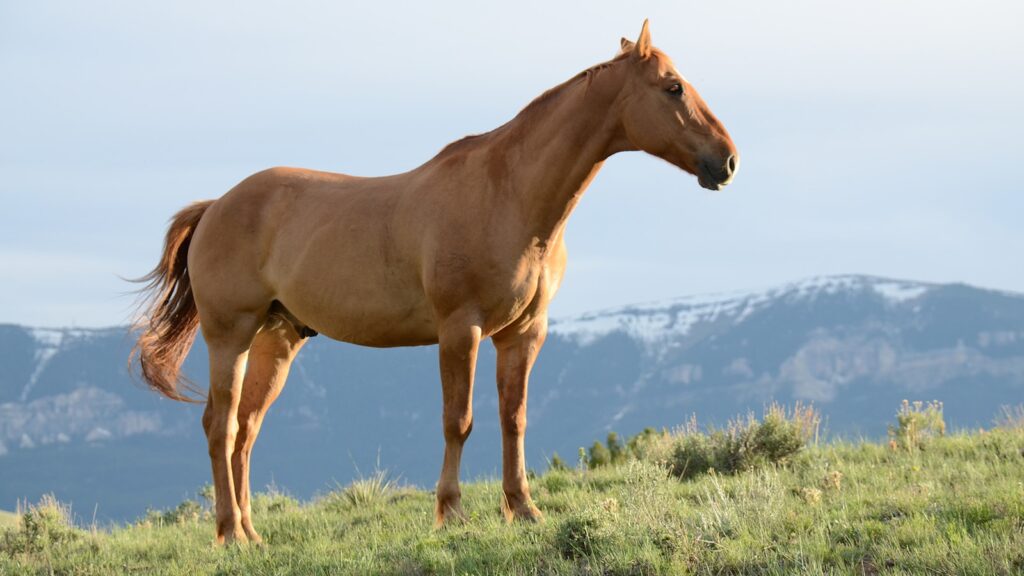
Equine Gastric Ulcer Syndrome (EGUS) refers to erosions and ulcerations that occur in the horse’s stomach lining due to excessive acid exposure. The equine stomach continuously produces acid, unlike human stomachs which secrete acid primarily during meals. This continuous acid production, combined with the fact that horses evolved to graze throughout the day, creates a perfect storm when modern management practices interrupt natural feeding patterns. The equine stomach is divided into two distinct regions: the glandular region (lower portion) which produces protective mucus, and the non-glandular or squamous region (upper portion) which lacks these protective mechanisms. Understanding this anatomical distinction helps explain why the squamous region is particularly vulnerable to ulceration when acid splashes upward during exercise or when the stomach remains empty for extended periods.
Risk Factors That Predispose Horses to Ulcers
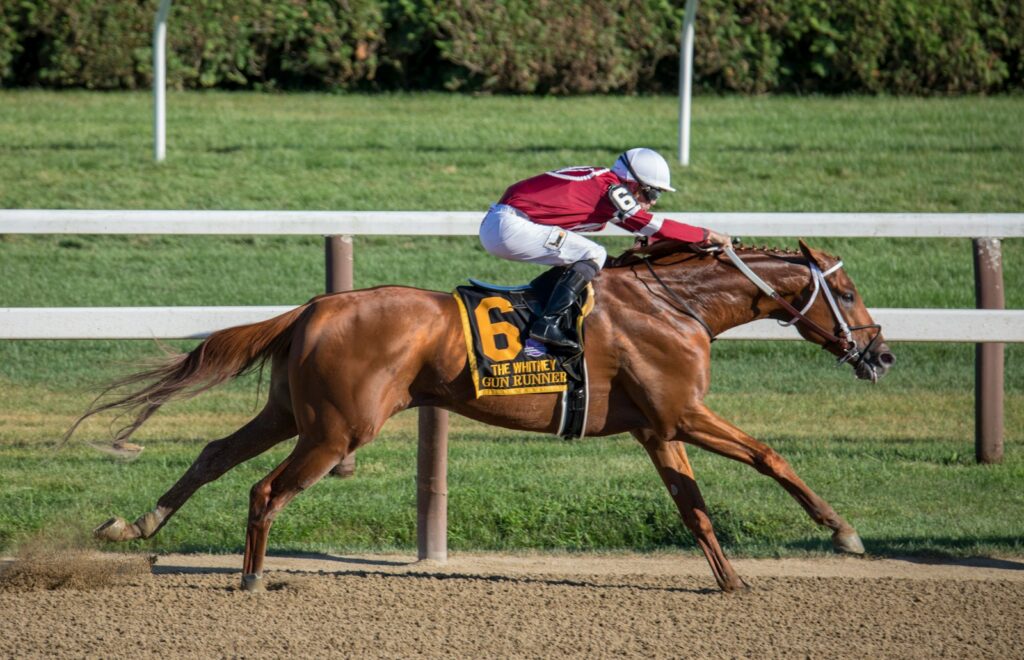
Several management practices and environmental factors significantly increase a horse’s risk of developing gastric ulcers. Intense training schedules and competition place physiological stress on the body, redirecting blood flow away from the stomach and reducing protective mechanisms. Intermittent feeding schedules or extended periods without food (over 6 hours) allow stomach acid to accumulate without the buffering effect of forage. High-grain diets stimulate increased acid production while providing less chewing time than forage, resulting in reduced saliva production which normally helps neutralize stomach acid. Additional risk factors include stall confinement which limits natural grazing behavior, administration of non-steroidal anti-inflammatory drugs (NSAIDs) like phenylbutazone or flunixin meglumine, and psychological stressors such as transport, environmental changes, or disruption of established herd dynamics.
Recognizing the Clinical Signs
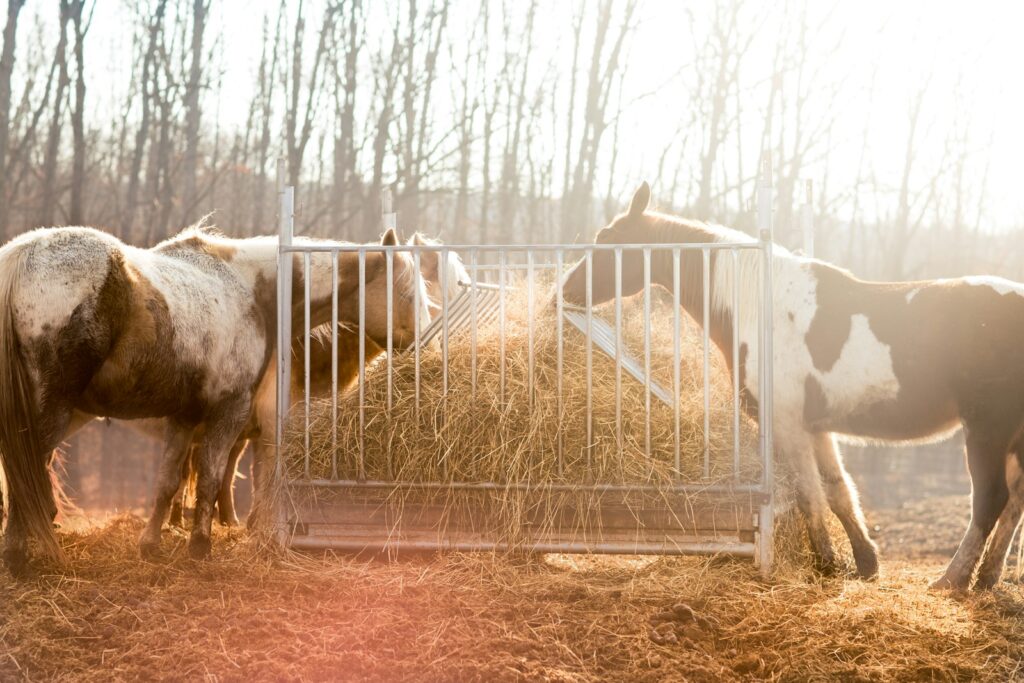
Identifying gastric ulcers can be challenging because horses often display subtle behavioral changes rather than obvious symptoms of pain. Common indicators include a decrease in appetite or altered eating patterns, such as leaving grain but still consuming hay, or vice versa. Weight loss despite adequate feed provision often occurs, sometimes accompanied by a dull hair coat. Performance issues frequently manifest as decreased athletic ability, reluctance to collect or extend, resistance to the bit, or sensitivity when tightening the girth. Behavioral changes may include increased irritability, teeth grinding (bruxism), excessive salivation, or developing new stable vices like cribbing or wood chewing. Some horses exhibit mild, recurrent colic symptoms, particularly after eating, while others may lie down more frequently than usual. Any combination of these signs warrants further investigation, especially in horses with known risk factors.
Diagnostic Approaches for Confirmation
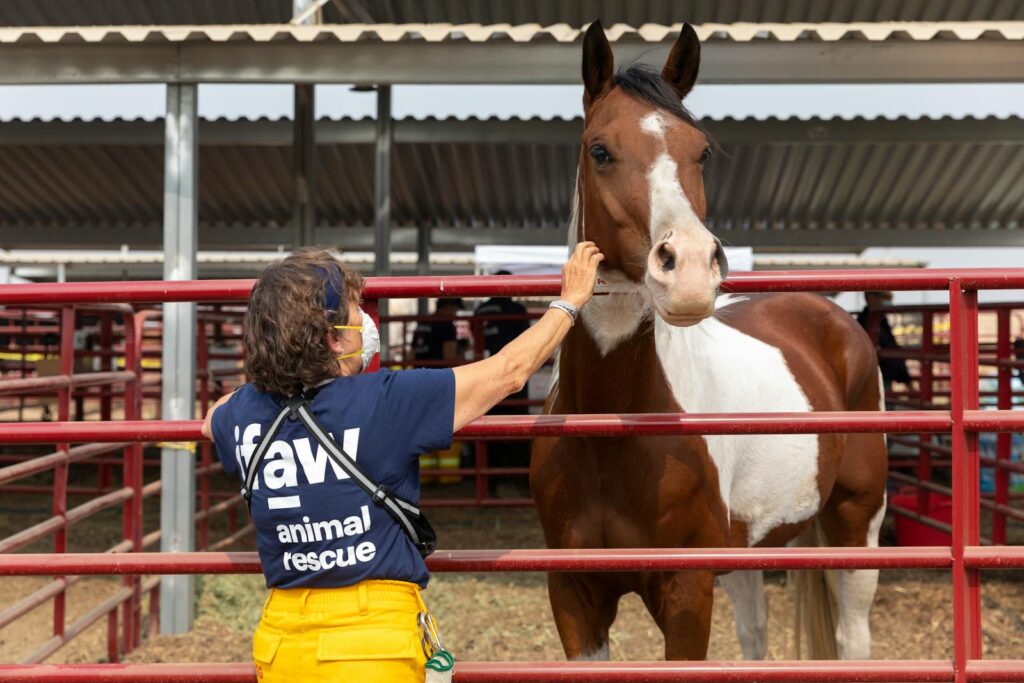
Definitively diagnosing gastric ulcers requires direct visualization via gastroscopy, a procedure where a veterinarian passes a flexible endoscope through the horse’s nostril into the esophagus and stomach. This procedure allows for assessment of both the location and severity of ulcerations, guiding appropriate treatment protocols. For accurate visualization, the horse must be fasted for 8-12 hours and water withheld for 2-4 hours before the examination. While some veterinarians may suggest a presumptive diagnosis based on clinical signs and response to treatment, gastroscopy remains the gold standard for confirmation. Occasionally, veterinarians may use bloodwork to rule out other conditions, though standard blood panels typically appear normal in horses with gastric ulcers. Some facilities now offer portable endoscopy services, making this diagnostic tool more accessible for horses that cannot be transported to a clinic.
Medical Treatment Options

Omeprazole represents the most effective FDA-approved medication for treating equine gastric ulcers by suppressing acid production in the stomach. Available in both paste and injectable formulations, the standard treatment protocol involves 4 mg/kg body weight daily for 28-30 days to allow complete healing of ulcerations. For maintenance after healing, a reduced dose of 1-2 mg/kg may be recommended for horses with ongoing risk factors. Alternative medications include ranitidine and cimetidine (H2 blockers), which work differently than omeprazole but may provide some benefit when cost is a constraint, though they require more frequent administration. Sucralfate, a mucosal protectant that binds to ulcerated areas, is sometimes used as supplemental therapy, particularly for glandular ulcers. It’s crucial to follow the complete treatment course prescribed by your veterinarian, as premature discontinuation often results in recurrence, even if symptoms improve earlier.
Dietary Management Strategies
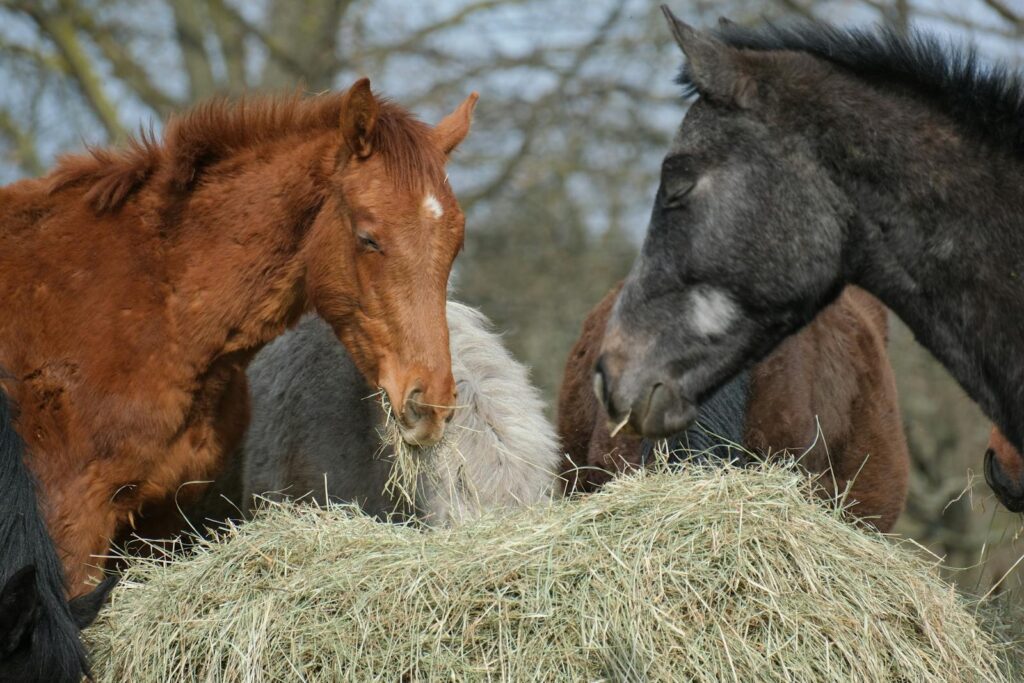
Dietary modifications form a cornerstone of both treatment and prevention protocols for equine gastric ulcers. Providing constant access to good quality forage creates a fiber mat in the stomach that helps buffer acid while stimulating saliva production, which contains natural bicarbonate. When continuous grazing isn’t possible, dividing the daily hay ration into multiple small meals fed throughout the day minimizes periods with an empty stomach. Limiting grain concentrates and dividing any necessary grain into smaller, more frequent meals reduces acid stimulation and prevents rapid starch fermentation. Alfalfa hay deserves special consideration as research shows its higher calcium and protein content provides additional buffering effects against stomach acid. Specialized commercial feeds containing ingredients like sea buckthorn, pectin-lecithin complexes, or fermentable fibers may provide additional gastric support, though these should complement rather than replace fundamental management changes.
Creating an Ulcer-Friendly Environment
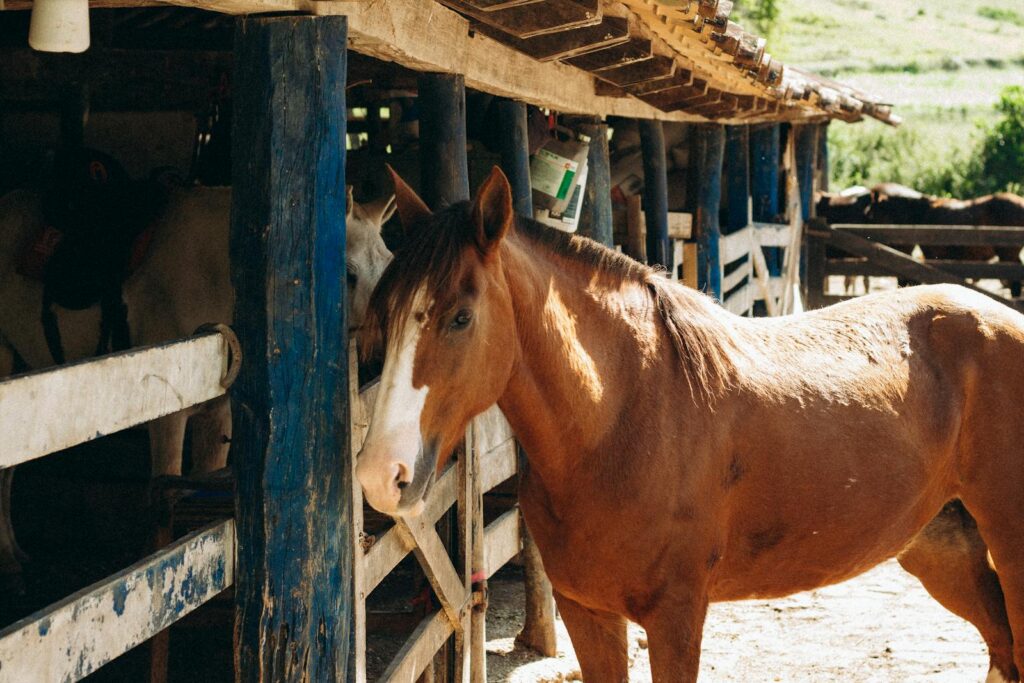
Environmental modifications significantly impact gastric health by reducing physical and psychological stressors that exacerbate ulcer formation. Maximizing turnout time allows horses to fulfill their natural grazing behaviors while promoting movement that aids digestive function and reduces stress. For horses requiring stall confinement, providing companions or stable mirrors can reduce isolation stress, while slow-feed hay nets ensure longer feeding periods. Training schedules should incorporate adequate warm-up periods, as sudden intense exercise can increase intra-abdominal pressure and acid splashing. Maintaining consistent routines around feeding, turnout, and exercise provides predictability that reduces anxiety. For competition horses, consider prophylactic medication before high-stress events like shipping or shows, particularly for individuals with a history of ulcers. Creating visual access to other horses, even when physical contact isn’t possible, satisfies the herd animal’s need for security and companionship.
Exercise Considerations for Affected Horses
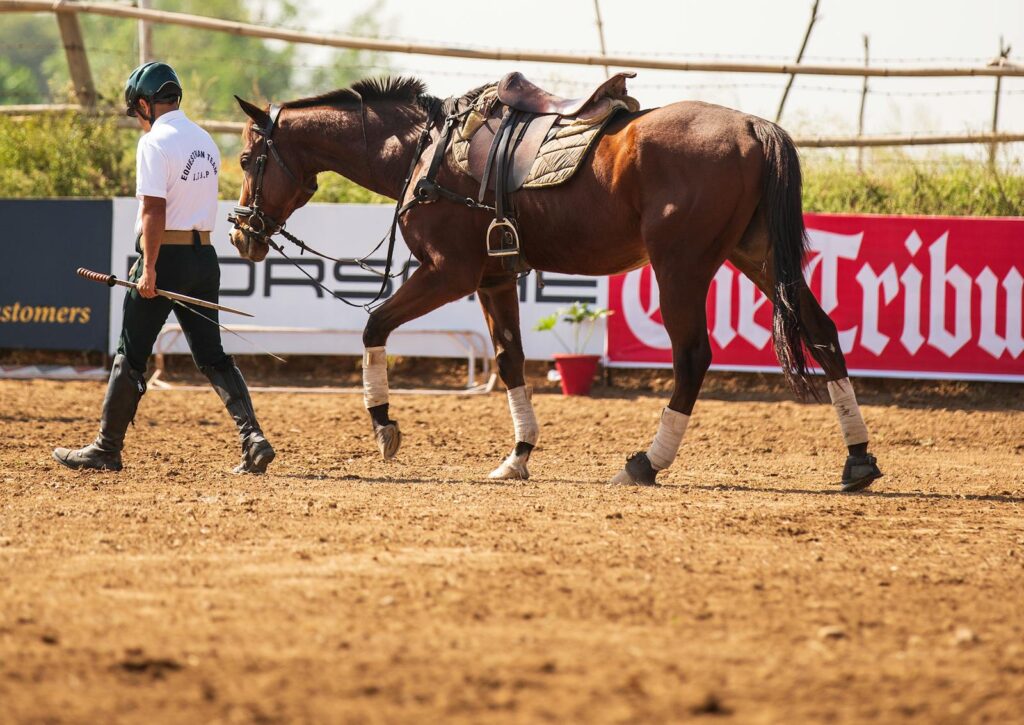
Exercise intensity and scheduling require thoughtful management for horses with gastric ulcers or those at risk of developing them. High-intensity work increases intra-abdominal pressure, forcing acidic content against the sensitive upper stomach region, particularly when the stomach is empty. Scheduling workouts after small meals rather than on an empty stomach provides some protection, though allowing 1-2 hours after larger meals prevents discomfort from a fully distended stomach during exertion. For horses in intense training programs, consider offering small amounts of alfalfa hay 30-60 minutes before work to create a protective buffer. During lengthy training sessions or competitions, brief breaks allowing small forage consumption can help maintain gastric protection. Reducing exercise intensity during active ulcer treatment supports healing, with a gradual return to full work as recommended by your veterinarian based on follow-up gastroscopy results and clinical improvement.
Stress Reduction Techniques
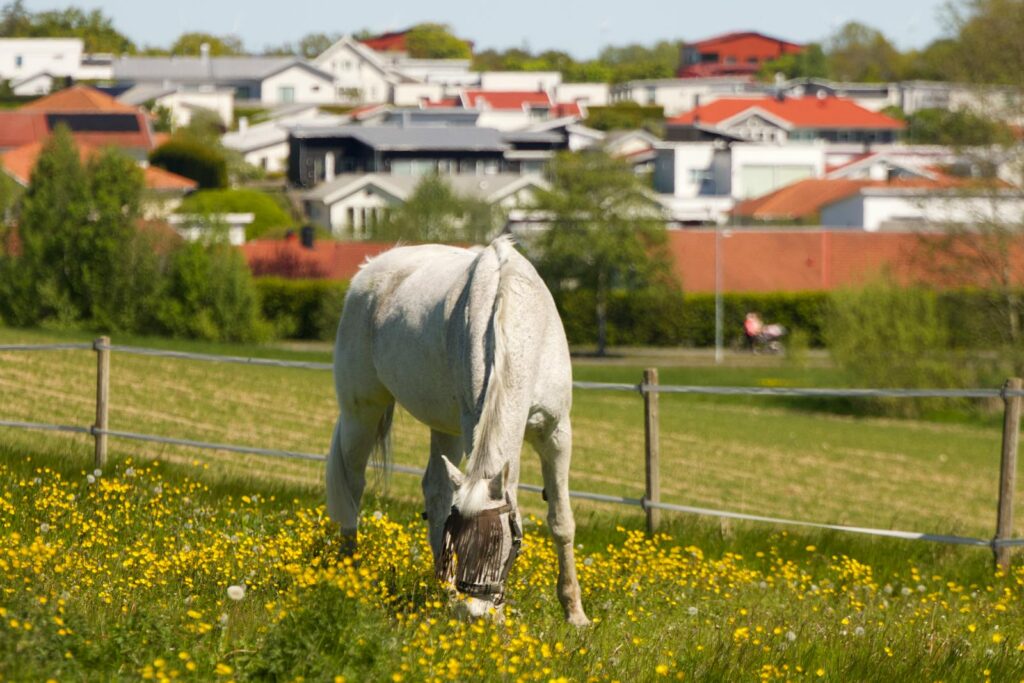
Psychological stress significantly contributes to ulcer development through physiological pathways that increase acid production and alter blood flow to the stomach lining. Establishing consistent daily routines provides security for horses, reducing anticipatory anxiety around feeding, turnout, and handling. Introducing changes gradually, whether to diet, housing, or exercise regimens, allows horses time to adapt without triggering stress responses. For horses showing anxiety in certain situations, systematic desensitization techniques can build confidence, while calming supplements containing ingredients like magnesium, tryptophan, or specific herbs might benefit particularly sensitive individuals. Transportation stress represents a major ulcer trigger, so implementing strategies like frequent rest stops with access to water and forage during long journeys, accompanied by familiar companions when possible, can mitigate these effects. For competition horses, arriving at venues early allows acclimation to new surroundings before the added stress of performance.
Supplements for Gastric Support
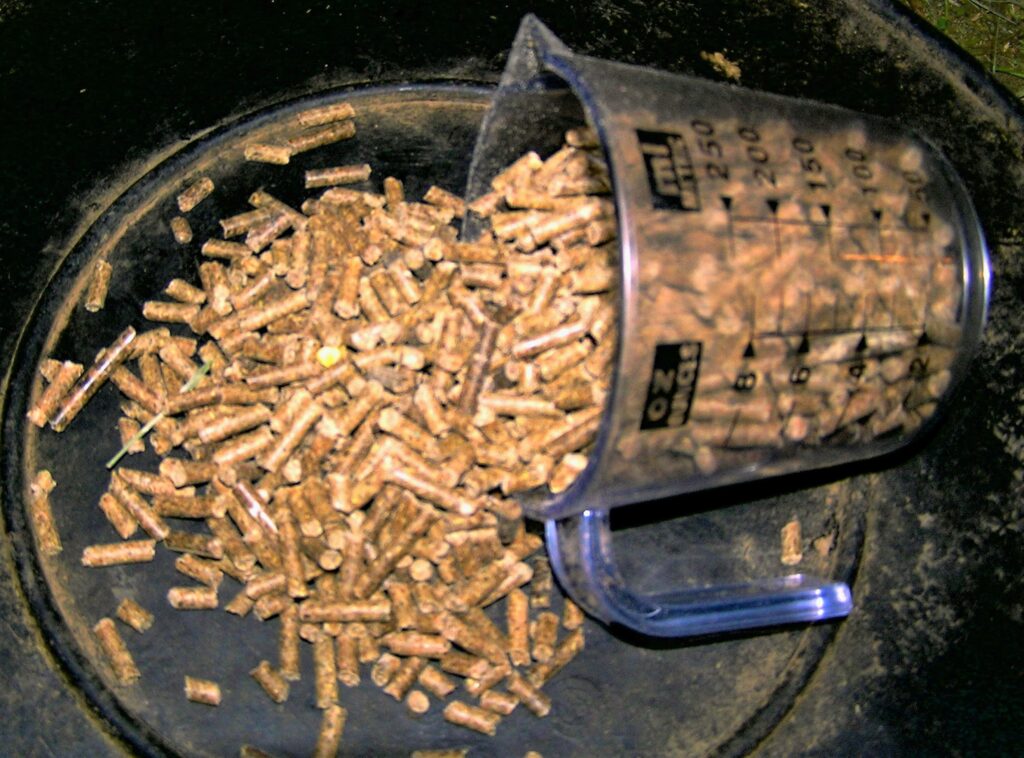
Various nutritional supplements aim to support gastric health, though their efficacy varies and should be considered complementary to medication and management changes rather than standalone treatments. Products containing calcium and magnesium hydroxide provide temporary acid neutralization, similar to human antacids. Pectin-lecithin complexes form a protective barrier over the stomach lining, potentially reducing acid contact with vulnerable tissue. Ingredients like sea buckthorn, slippery elm, marshmallow root, and aloe vera are valued for their mucosal coating properties and anti-inflammatory effects. Specific probiotics may help maintain overall digestive balance, potentially aiding in recovery and prevention, though research specifically addressing their impact on gastric ulcers remains limited. When selecting supplements, look for products with research supporting their efficacy and consult your veterinarian, as some combinations may interfere with prescribed medications or create imbalances if improperly formulated.
Prevention Strategies for High-Risk Horses
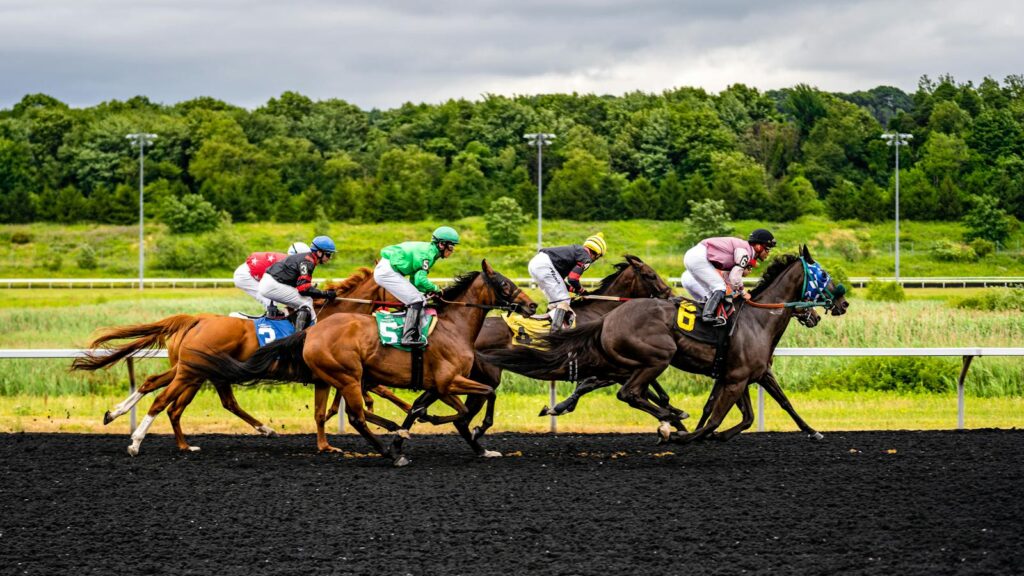
Implementing preventive measures is particularly critical for horses with previous ulcer history or those in high-risk situations like competition, travel, or intensive training. Daily turnout with access to pasture or hay represents the single most effective preventive strategy by allowing horses to follow their natural grazing pattern. When management constraints limit turnout, automatic hay feeders or specialized slow-feed systems can distribute small meals throughout the day and night, minimizing time with an empty stomach. Limiting starchy concentrates and feeding these after forage consumption helps reduce acid production peaks. Some horses benefit from maintenance doses of omeprazole during high-stress periods like competition seasons, though this should be determined in consultation with your veterinarian. Water access should remain unlimited, as adequate hydration supports proper digestive function and mucus production within the stomach lining. Creating opportunities for social interaction, even for stalled horses, reduces stress by satisfying the herd instinct that remains strong in these naturally social animals.
Long-Term Management and Monitoring
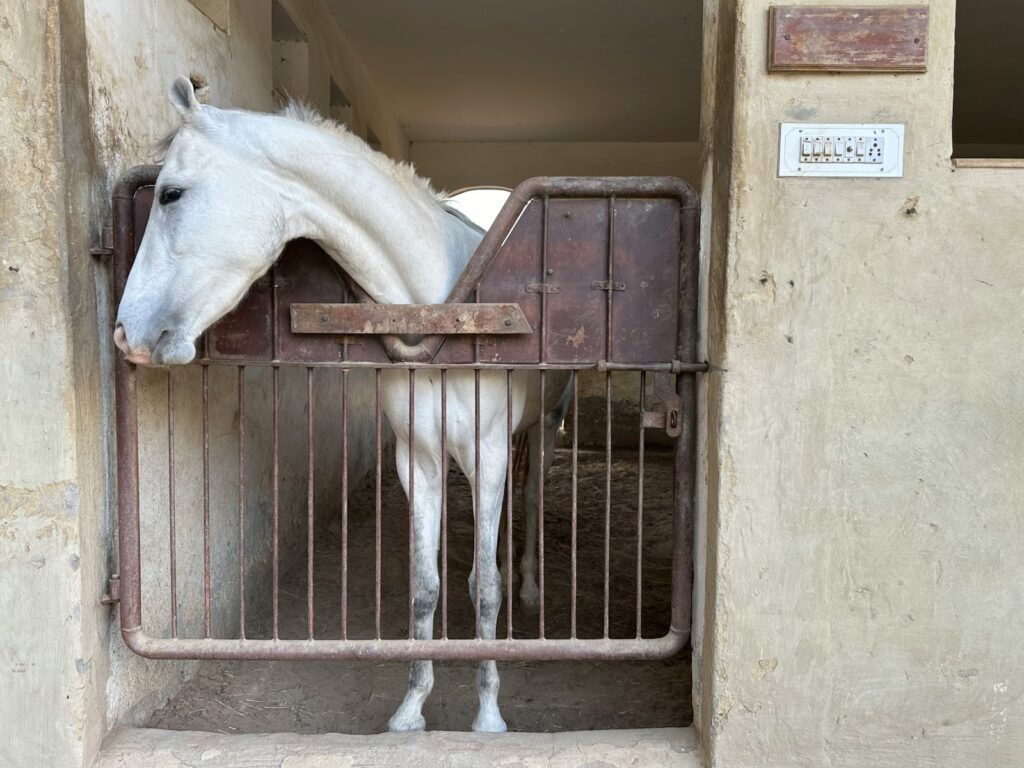
Successful long-term management of horses with a history of gastric ulcers requires vigilance and adaptation as circumstances change. Establishing a monitoring system to track subtle behavioral and performance indicators helps catch recurrence early, particularly during periods of increased stress or management changes. For competition horses or those with recurrent issues, scheduling regular follow-up gastroscopies every 3-6 months allows for objective assessment of gastric health and timely intervention if needed. Maintaining detailed records of diet, supplement regimens, medication protocols, and environmental factors helps identify patterns or triggers associated with symptom recurrence. Developing a close working relationship with a veterinarian familiar with the horse’s history ensures continuity of care and appropriate adjustments to the prevention strategy as the horse’s career and lifestyle evolve. Remember that management needs may change seasonally or as the horse ages, requiring periodic reassessment of the entire care program.
When to Seek Veterinary Intervention
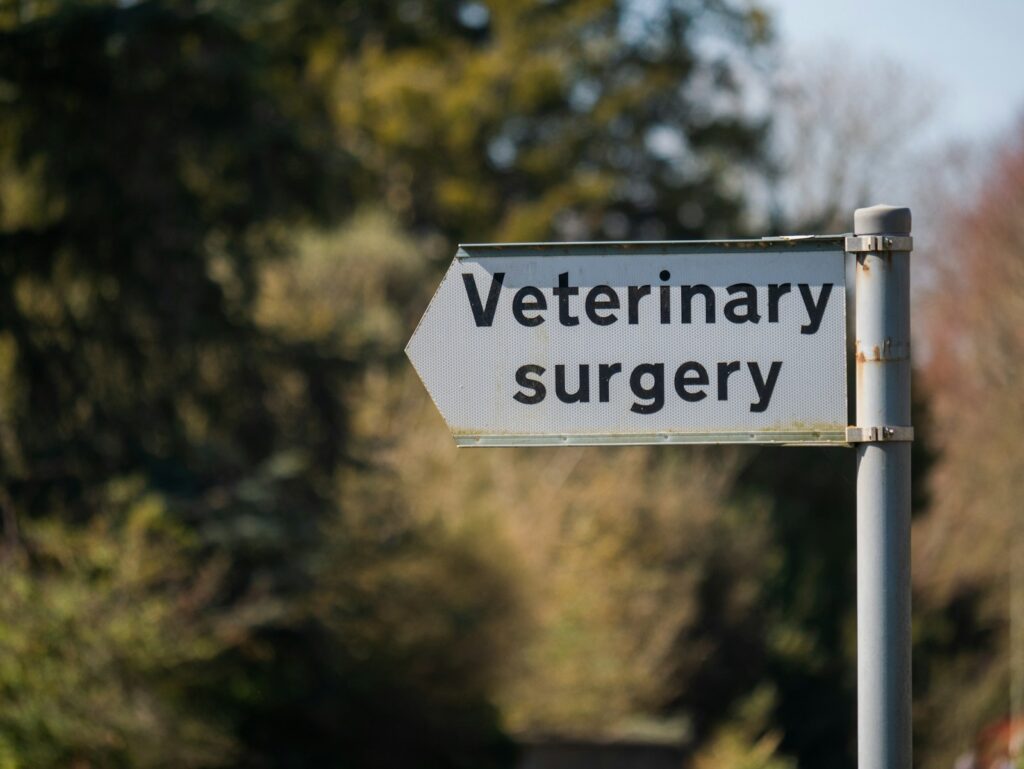
While prevention strategies form the foundation of gastric health, certain situations warrant immediate veterinary consultation. Any acute onset of colic symptoms, especially recurring mild episodes after eating, requires prompt evaluation to rule out complications of gastric ulceration or other digestive disorders. Significant behavioral changes that develop rapidly, particularly in conjunction with appetite loss or performance issues, should not be dismissed as training problems without medical investigation. Visible weight loss despite adequate caloric intake represents a red flag that warrants thorough examination, as do persistent signs of discomfort like teeth grinding or excessive lying down. For horses already diagnosed with ulcers, failure to respond to appropriate treatment within 7-10 days suggests either treatment resistance, an incorrect diagnosis, or complications that require reassessment. Remember that while mild ulcers may resolve with management changes alone, moderate to severe cases require medical intervention to prevent complications and relieve pain.
Economic Considerations of Treatment vs. Prevention
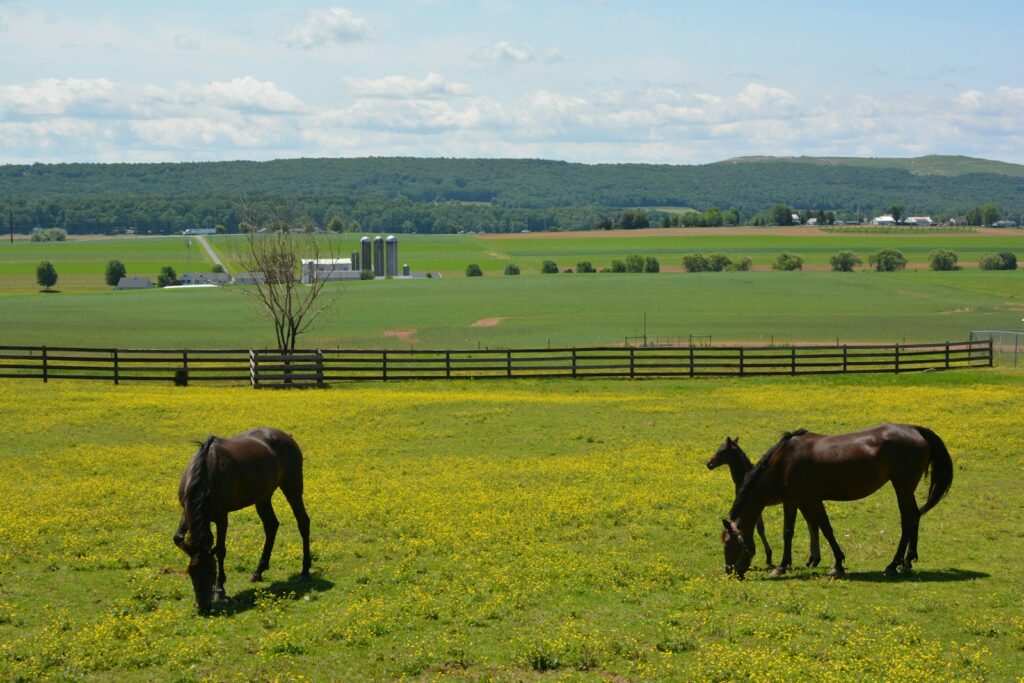
The financial aspects of managing equine gastric ulcers warrant consideration, as full treatment courses can represent a significant investment. A complete 28-day treatment protocol with FDA-approved omeprazole can cost between $800-1,200 for an average-sized horse, with potential additional expenses for diagnostics, veterinary examinations, and follow-up care. By contrast, implementing preventive management strategies often involves one-time investments in slow feeders ($100-300), automatic hay dispensers ($300-1,000), or paddock creation for increased turnout, plus ongoing but often minimal adjustments to feeding practices. These preventive measures not only reduce ulcer risk but frequently contribute to overall improved health, potentially decreasing other veterinary expenses long-term. For horses requiring ongoing medication, generic omeprazole formulations or compounded preparations may offer cost savings, though efficacy can vary compared to FDA-approved products. When evaluating expenses, consider both direct medication costs and indirect costs like lost training days, reduced performance, and diminished competitive success that frequently accompany untreated gastric ulcers.
Equine gastric ulcers, while common, need not be an inevitable part of modern horse keeping. Through a combination of attentive observation, appropriate medical intervention, and thoughtful management adjustments, owners can effectively address this painful condition and prevent its recurrence. The key lies in understanding each individual horse’s risk factors and creating a tailored approach that considers both biological needs and practical constraints. By prioritizing frequent forage access, minimizing stressors, and working closely with veterinary professionals, we can significantly improve quality of life for horses in our care. Remember that small, consistent changes often yield the greatest long-term benefits for gastric health, making ulcer management a journey of continual refinement rather than a one-time fix.


